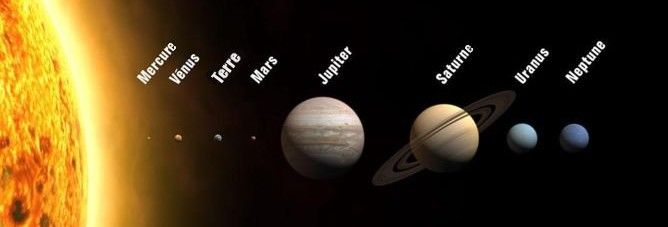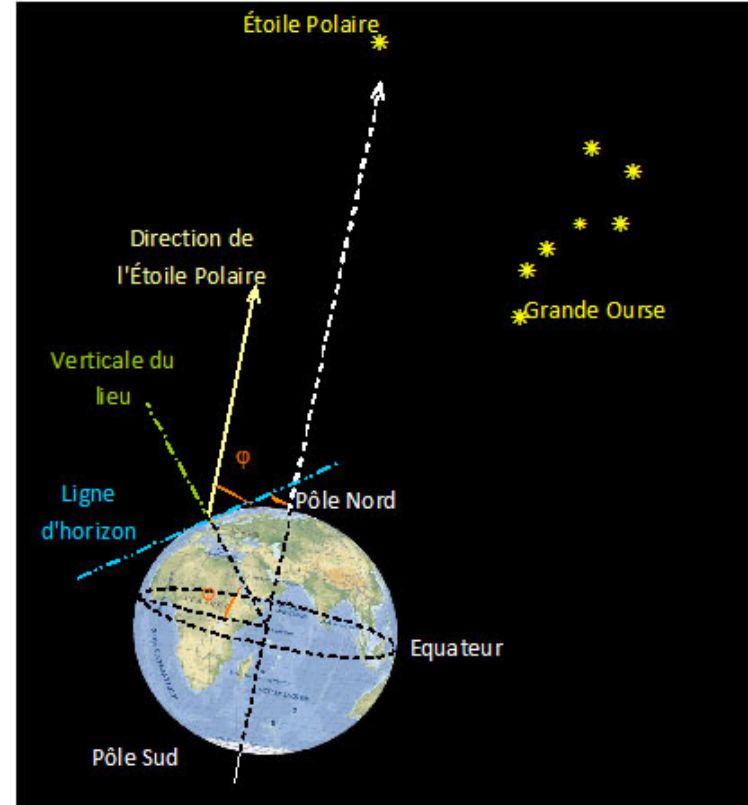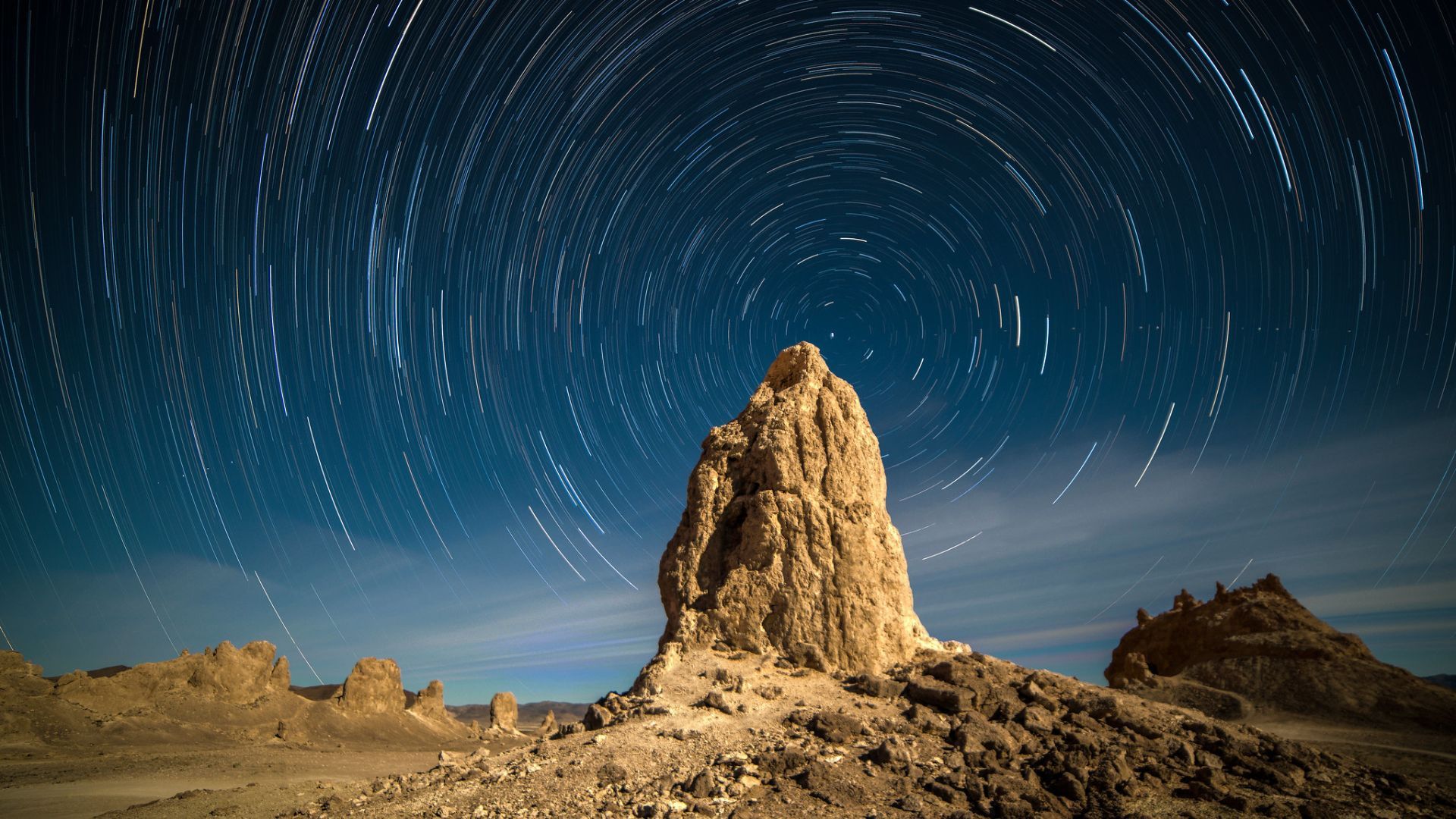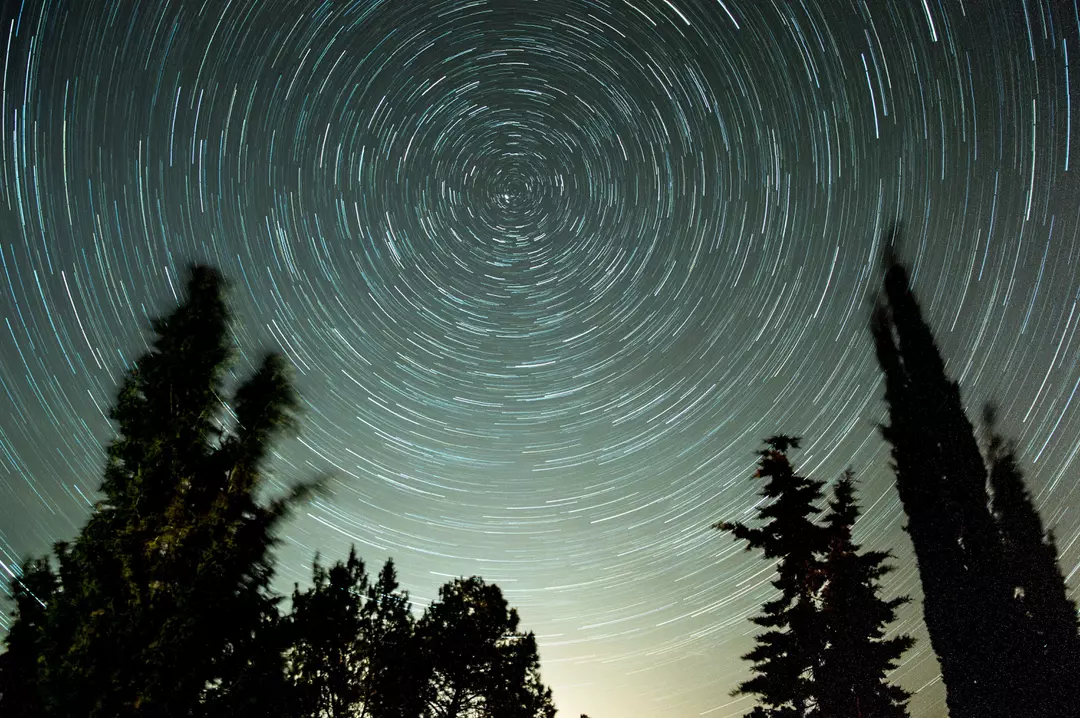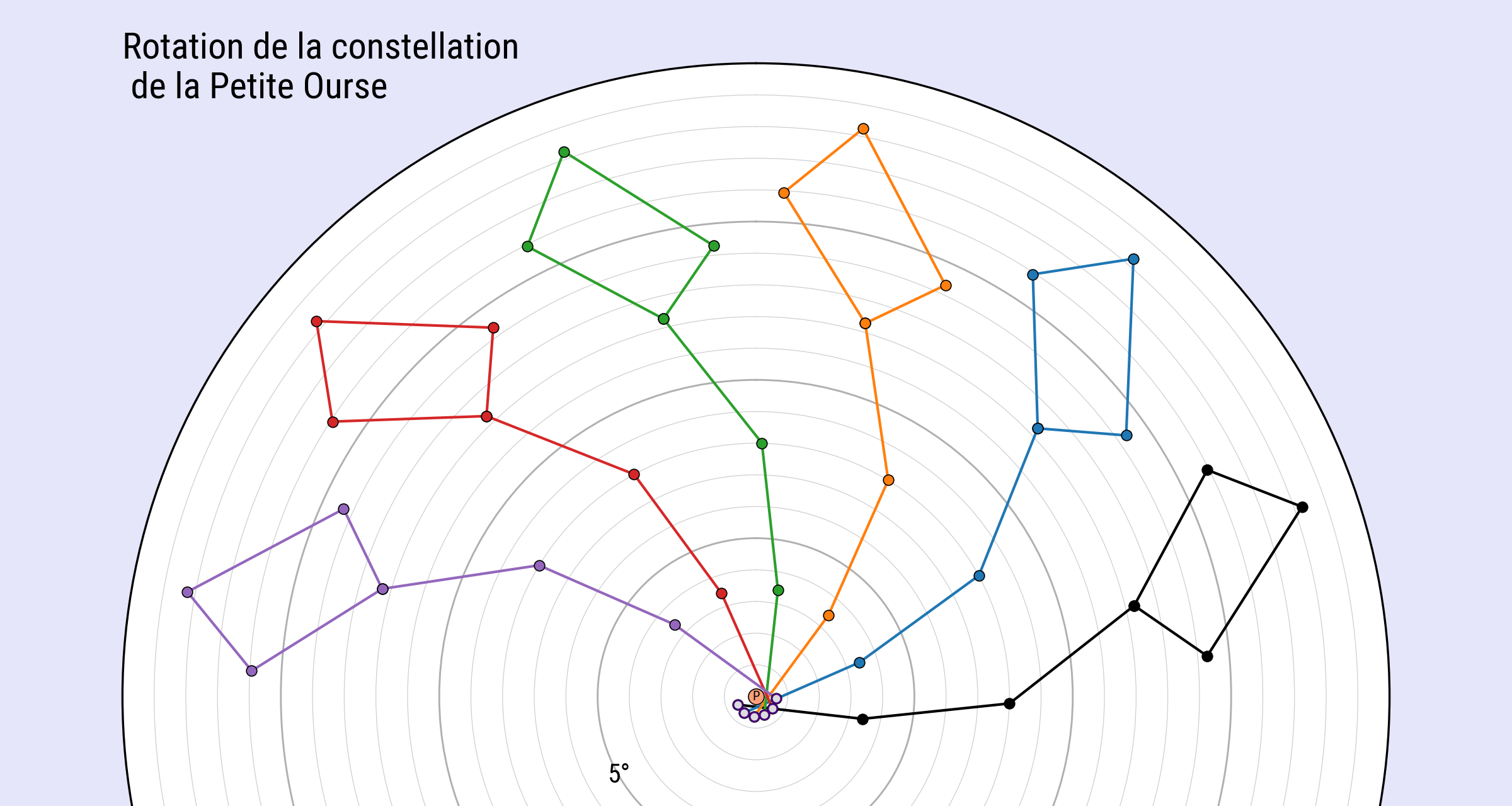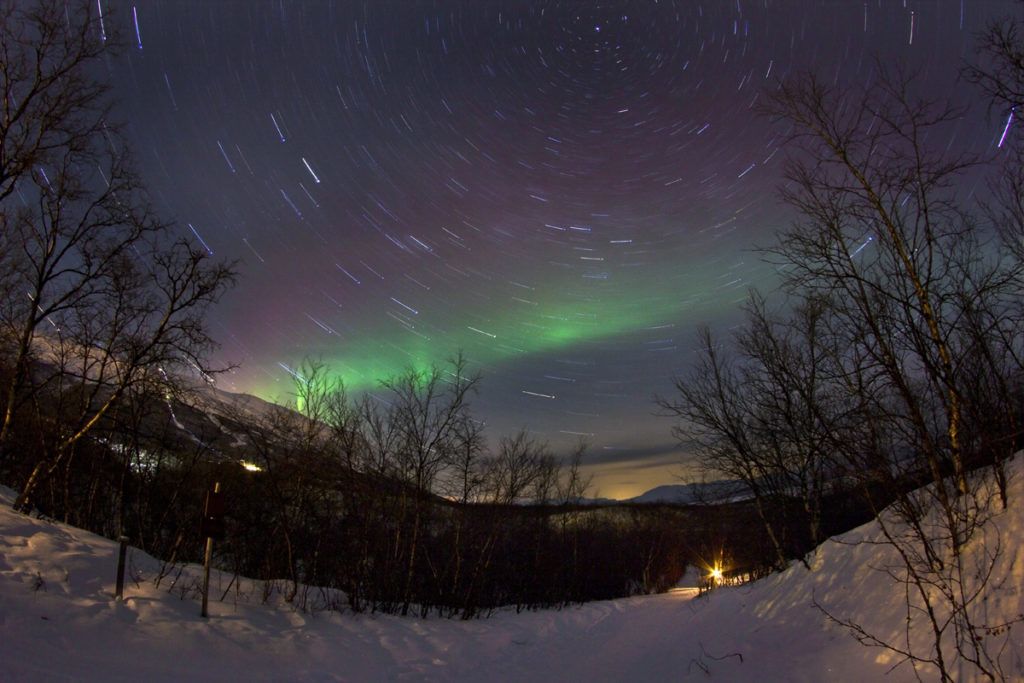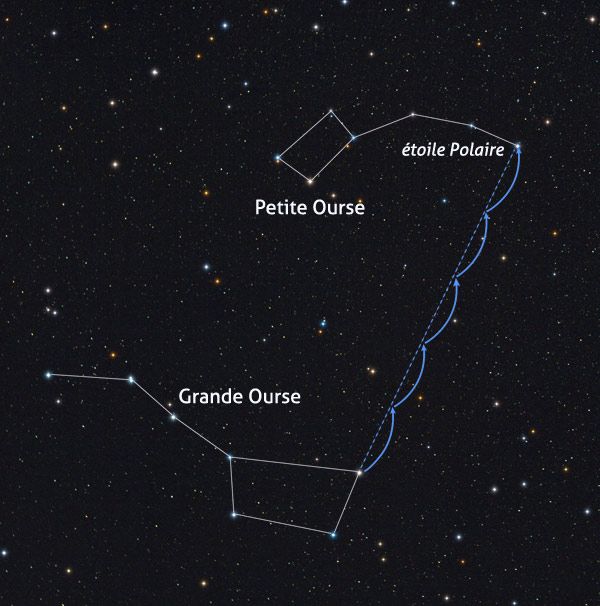What is the North Star ?
I am always very surprised, during my evenings with the public, when I ask the names of the planets in our solar system, to find that the name of our brave Earth regularly comes last. That's just the way it is. No one is a prophet in their own country.
So, even if it means appearing eccentric, I will begin our fabulous journey into this celestial immensity with this small planet that welcomes us, the only one we know of to harbor life: Earth
.
Our great ancestors, Neanderthals, the Mesopotamians, and the Chaldeans, saw this celestial vault rotating above their heads like a great stellar choreography, a perpetual merry-go-round. The stars returned tirelessly, night after night, to the same position in relation to each other. No wonder, then, that they concluded that Earth was the center of the Universe. Galileo, at the beginning of the 17th century, established the truth. No, the sky does not revolve around the Earth. It is the Earth that rotates on its axis. Isn't our planet flat, motionless, the center of the Universe?
Today, we know of about ten movements, including one that governs day and night: its rotation.
Let's return for a moment to my audience. When it comes to naming a star, the North Star (Polaris in Latin) comes first. What's so special about it? Preconceived ideas abound here, and, as everyone knows, they are often erroneous. For example: it's the first to appear in the evening. False. You even have to wait until night falls to see it.
It's the brightest in the sky. Wrong again. It ranks 59th on the scale of brightness (called magnitude) of stars.
It's the evening star. Of course not. The one we wrongly call the evening star is none other than Venus. Why do I say wrong? Simply because Venus is not a star but a planet, sometimes called Earth's twin sister. We'll see later that here again, the preconceived idea is not far off. And especially that it wouldn't be a good place to live.
So let's put reality in its proper place. Why is this North Star so famous?
If we were able to pierce the Earth from the South Pole to the North Pole and put our eye into this hole, you would see, in the extension of Earth's rotational axis, a star located 440 light-years (4,400,000,000,000,000 km) away. Its name is Alruccabah, which means knee, and it is the main star (alpha) of the constellation Ursa Minor.
Its only peculiarity: it's the only star in the sky that won't seem to move throughout our lives. The entire sky will revolve around it, counterclockwise. It's a useful landmark. Hence the usefulness of knowing how to locate it for military personnel who need to orient themselves.
Other people are just as interested in identifying Polaris: amateur astronomers. Indeed, every telescope must have its rotation axis (called the axis of right ascension) directed toward the North Star. If this isn't the case, you won't be able to track objects in the sky. They will disappear very quickly from your eyepiece. We will certainly return later, in another article, to this phenomenon and this little maneuver called telescope alignment. Children will soon be placing orders with Santa Claus.
How do you spot it in the sky? It's certainly not its brightness that catches the eye. But an ancestral method learned over generations works perfectly. The Big Dipper, or Great Dipper, is permanently visible in the French sky. Just like Cassiopeia, the Giraffe, or the Dragon. We call these circumpolar constellations.
Starting with the Big Dipper, composed of seven magnificent and very visible stars, let's take the two opposite the handle of the Saucepan. They are named Merak and Dhube. A little tip: if you stretch out your arm, spreading your thumb and index finger apart, your two fingers will appear to rest on these two stars. Extend this distance five times toward the top of the Saucepan. We find a somewhat isolated star. It's the North Star, Polaris.
We will therefore find it towards the North and at a height corresponding to the latitude of the location. The EVs of Castelnaudary, our comrades from Larzac and Nîmes, as well as the riders from Carpiagne see it at around 44° above sea level. In Kourou, it's only 5° above the horizon. But our Mayotte natives, like our ancestors in Mururoa, couldn't rely on it to find their way, since it's invisible in the southern hemisphere.
In the past, the first person to highlight this peculiarity was none other than Magellan, who, upon setting out on his circumnavigation of the globe in 1512, noted in his tablets, day after day, as the North Star descended towards the horizon, it sailed due south. Arriving at the equator, Polaris became invisible. It also proved that the Earth was round. Today's flat-earther teenagers should reread Magellan's notebooks.
Unlike the North Pole, the South Pole lacks a major star. Our Dzaoudzi legionnaires shouldn't feel restricted; they have other guiding stars to guide them, such as the Southern Cross.
